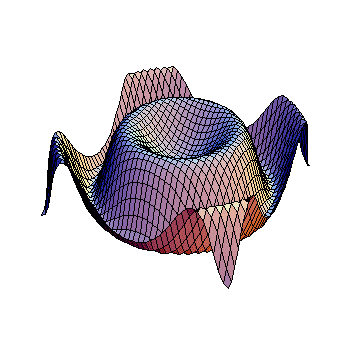We have metallic iron, reacting with oxygen gas and water
#Fe + O_2 + H_2O#
What would happen with a bar of iron, left outside (where the air is humid)? Rust, of course. Rust is the name of a bunch of stuff, the main ones being ferric oxide #Fe_2O_3# and ferric hydroxide #Fe(OH)_3#, however as it turns out, the former is just what happens when you dehydrate the second, so we can say the reaction goes like
#Fe + O_2 + H_2O rarr Fe(OH)_3#
Which isn't quite balanced because of that pesky water, now thinking mathematically, we must have the same number of #H#s, #O#s and #Fe#s on both sides.
If we have #x# moles of water and #y# moles of #O_2# and #z# moles of #Fe# we have
#2x# H on LHS, #x + 2y# O on LHS and #z# Fe on LHS, to
#3z# H on RHS, #3z# O on RHS and #z# Fe on RHS.
If we pick #z = 1#, we'll have
#2x = 3 rarr x = 3/2#
#3/2 + 2y = 3 rarr 2y = 3 - 3/2 rarr y = 3/4#
#Fe + 3/4O_2 + 3/2H_2O rarr Fe(OH)_3#
Multiplying by #4#,
#4Fe + 3O_2 + 6H_2O rarr 4Fe(OH)_3#
Now, as the name implies oxygen oxidizes the other, because it likes to go from #0# charge to #-2# charge, while it'll make the iron go from #0# charge to #+3# charge, which means Oxygen reduces itself and is the oxydizing agent, whereas Iron oxidizes itself and is the reducing agent.
This, like all redox equations can be accelerated by heat.

